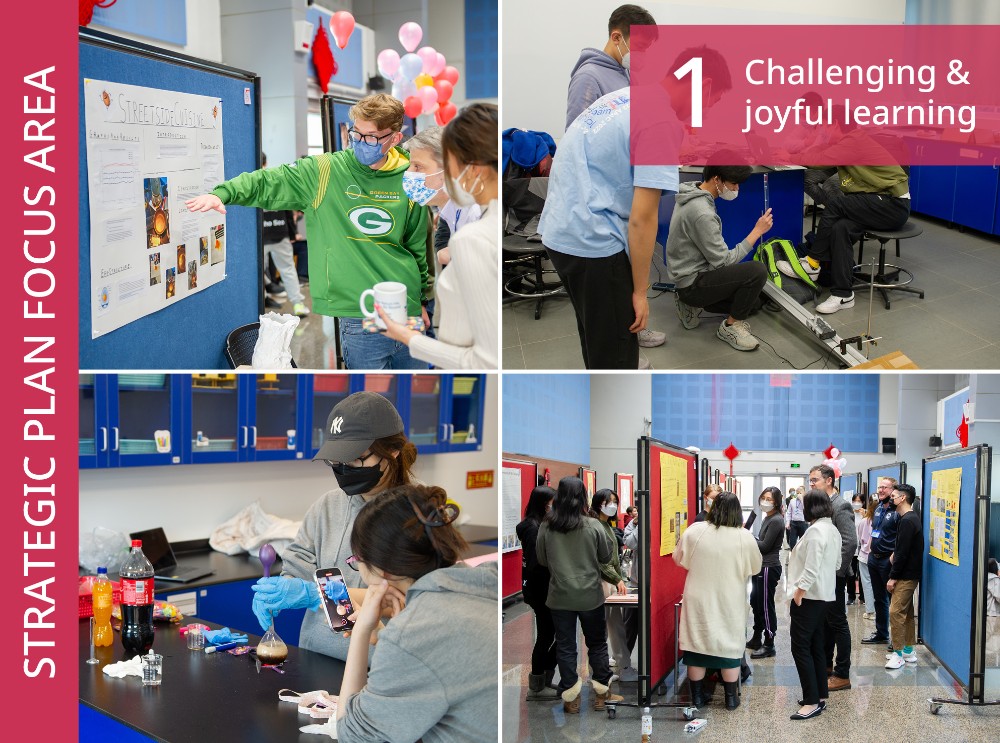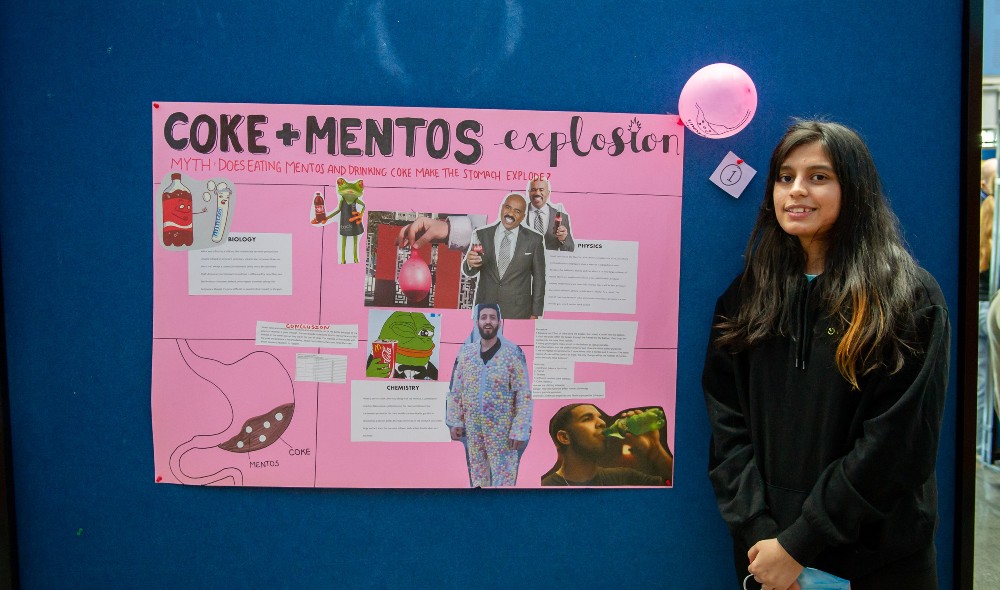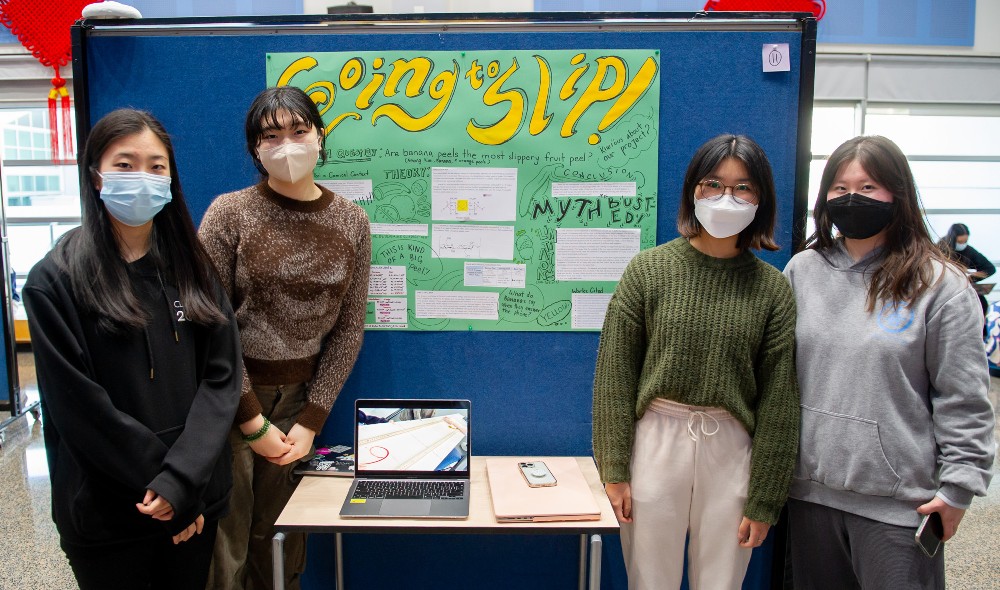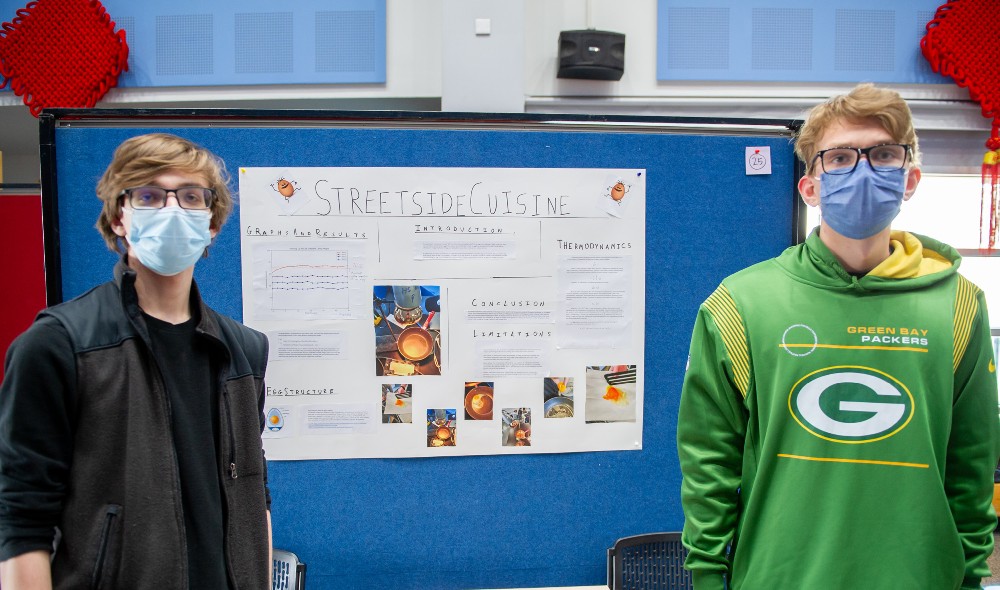Myth busters

By Nick Yates, ISB Communications
Published on Friday, February 10, 2023
Could Rapunzel’s hair really have supported the prince? Could the house in the movie Up have flown? What would be the consequences of a penny dropped from the Empire State Building striking someone underneath on the head?
These were some of the myths busted and popular ideas tested at the International School of Beijing (ISB) during a project last week that united Grade 12 students from different scientific disciplines to work together. Biology, chemistry, physics, environmental science, and sports science are often studied in isolation of each other, but this project (a required component of the International Baccalaureate, or IB) strongly connected all of them. Students of the different IB sciences had to team up in groups of three to four to conduct their experiments then present their findings in an exhibition open to the whole school.
ISB has established strategic focus areas for this year that include continuing to provide challenging and joyful learning, especially in core academic subjects like science. There is a consensus in modern education that learning is most effective when it is interdisciplinary and related to life outside the classroom, as in this project.
Last week’s exhibition had displays on dozens of different science experiments. Here’s a look at just three of them, selected at random, with explanations from some of the students involved about their conclusions and how this project put ISB’s strategic focus areas into action.

The myth: Eating Mentos and drinking Coke will make your stomach burst
The conclusion: No, but it may well give you a stomach upset
The students behind this experiment examined the questionable dietary combination of Mentos, the candy brand, with Coca-Cola. There is an urban myth that consuming the two together will cause your stomach to explode.
The students tested out this theory by placing Mentos and Coke inside a balloon and observing the results. It got them thinking about the relationship between pressure and volume; the elasticity of the stomach; hormones and enzymes.
“This is about applying our classroom learning to a practical scenario,” said Kannika M. “If you see someone eating Mentos and drinking a Coke, science is not the first thing that’s going to come into your mind. Projects like this force you to make connections between science and real life.”

The myth: Banana skins are a byword in danger. Tread on one at your peril
The conclusion: Banana skins are actually one of the less slippery types of fruit peel
This fruity group obviously had a lot of fun establishing what types of fruit peel to throw in the path of someone you really don’t like. Their display took full advantage of potential for puns, asking visitors “Are you kiwi-ous?” and telling them “This is kind of a big peel.”
The experiment tested kiwi fruit and oranges as well as bananas, looking at the dynamic coefficient of friction, a measurement that determines how slippery something is. The students also looked at the composition of the different peels (finding that there’s a lot more starch in banana skins than in the other two).
This was challenging and joyful learning at its most delicious. Nicole S explained that the challenge came in figuring out what methodology to use for their investigation and she and the other team members found joy in designing the presentation. This was the most fun aspect as it required creativity in presenting complex science in a way that would appeal to people.

The myth: Could you fry an egg on a hot sidewalk?
The conclusion: Yes
“We suspended a heat lamp over a frying pan and saw how hot the heat lamp would have to get in order for the egg to cook,” explained Harrison T. “Computer science was used to analyze the data. Through physics, we explored the thermodynamics of the reaction. In biology, we looked at the structure of the egg and what is going on when you heat an egg.
“It’s helpful in seeing the connection between the different sciences. Unless one student takes multiple different science courses, it’s difficult to see those connections. For example, as our physics partner was telling us about thermodynamics, we were able to see that that was something we learn about in chemistry too. Everything’s interconnected.”
Harrison said the project also reinforced the practical application of sciences: “People coming to see this exhibit will learn that, yes, an egg can be cooked on a hot sidewalk, but also they’ll see that the sciences are there in the real world. All these equations and ideas about biological structure, these are things you’re not just going to use in class, they’re going on all around us.”
The kind of challenging and joyful learning seen in this science project is one of three main focus areas for ISB. ISB news articles in 2022-2023 are all looking at an aspect of ISB that's an example of one of the three areas. To find out more, click here. You can also read this article for more on interdisciplinary learning at ISB.
ISB is an extraordinary school, made so by a tradition of educational excellence spanning 45 years. Establishing, nurturing, and growing such an exceptional learning community has been and remains intentional; we work hard to build strong relationships so our learning is at its best.
